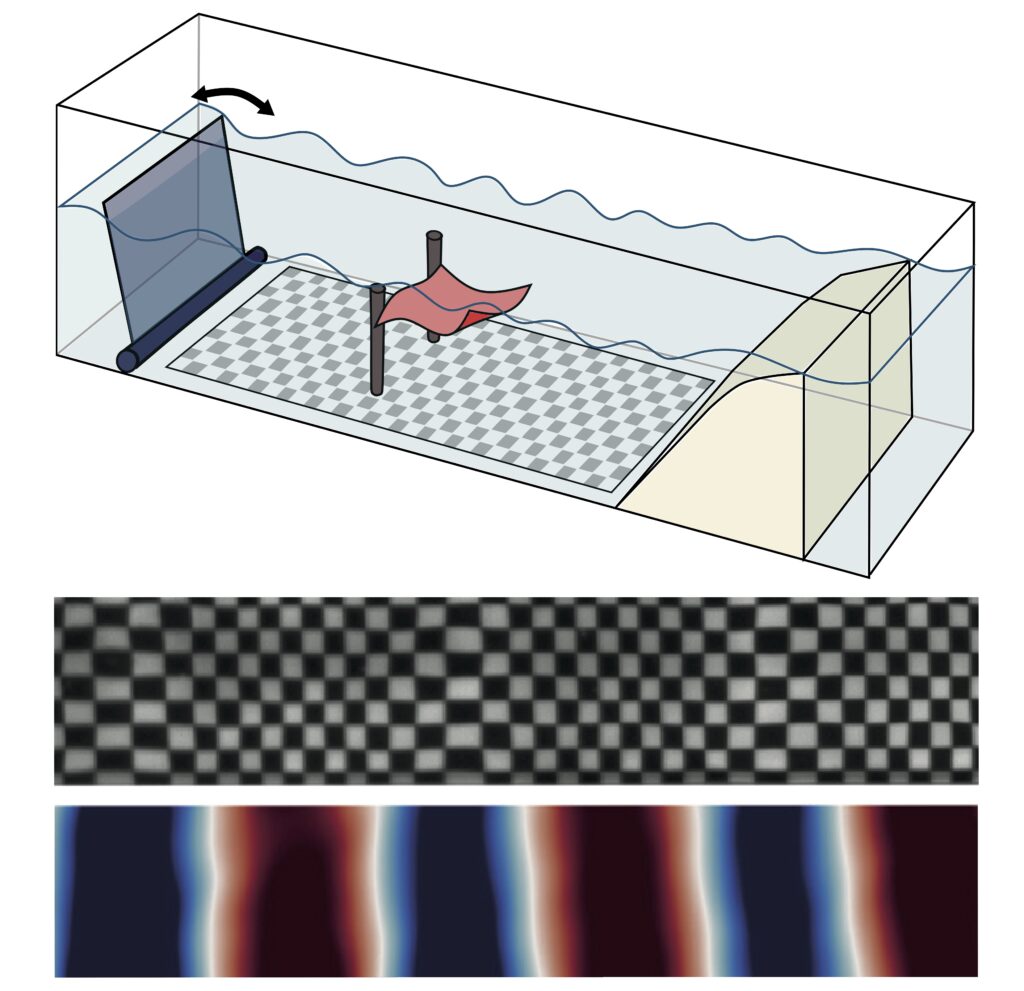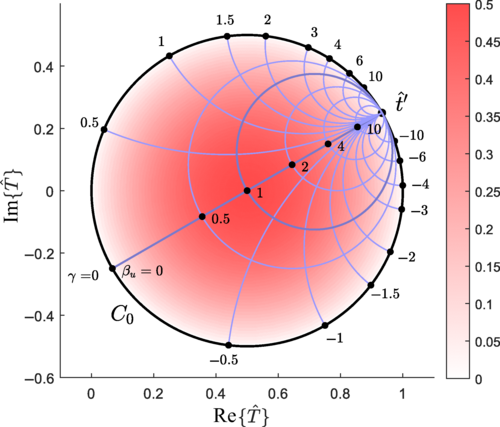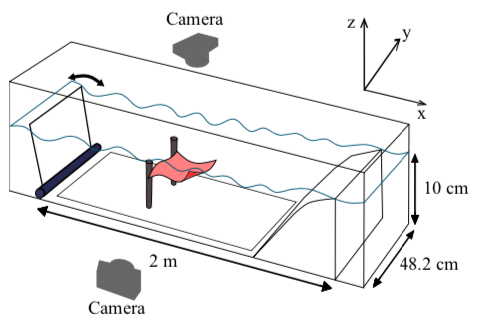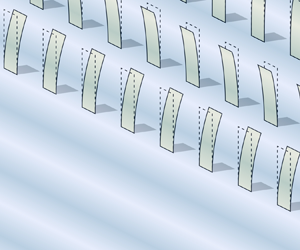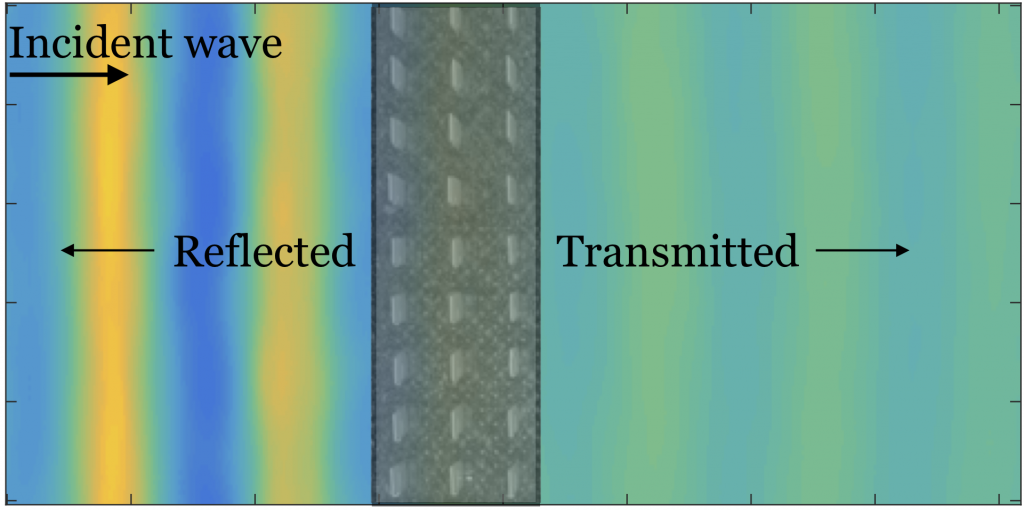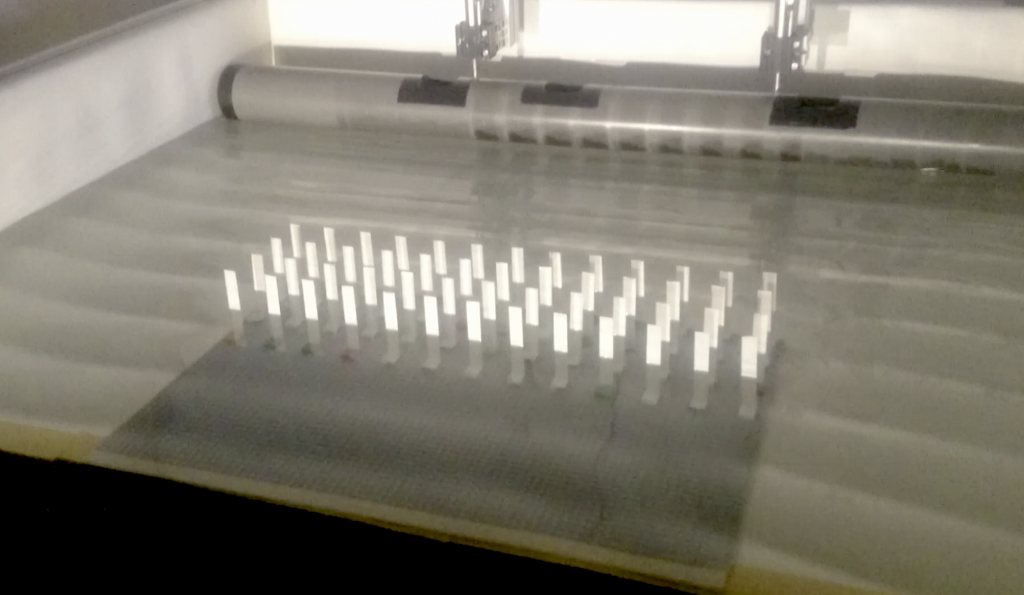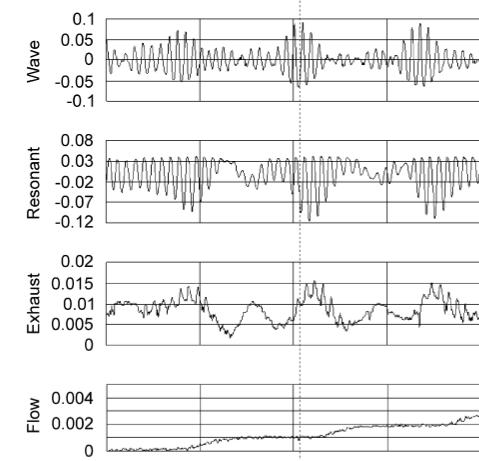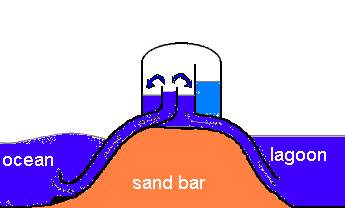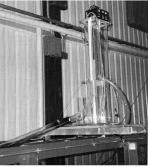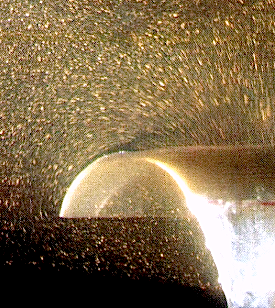Experiments on water wave interactions with a horizontal submerged elastic plate
G. Polly, A. Mérigaud, B. Thiria, R. Godoy-Diana
Journal of Fluid Mechanics 1007, R4 (2025)
doi: 10.1017/jfm.2025.90
Submerged elastic plates have been considered as potentially effective design elements in the development of wave energy harvesters but their behavior in a wave field remains largely unexplored, especially experimentally. We discuss in this paper how a submerged elastic plate, clamped at one edge, interacts with water waves. Positioned at a fixed depth in a wave tank, the flexible plate demonstrates significant wave reflection capabilities, a characteristic absent in rigid plates of identical dimensions. The experiments thus reveal that plate motion is crucial for wave reflection. Sufficiently steep waves are shown to induce a change in the mean position of the plate, with the trailing edge reaching the free surface in some cases. This configuration change is found to be particularly efficient to break water waves. These findings contribute to understanding the potential of elastic plates for wave energy harvesting and wave attenuation scenarios.
